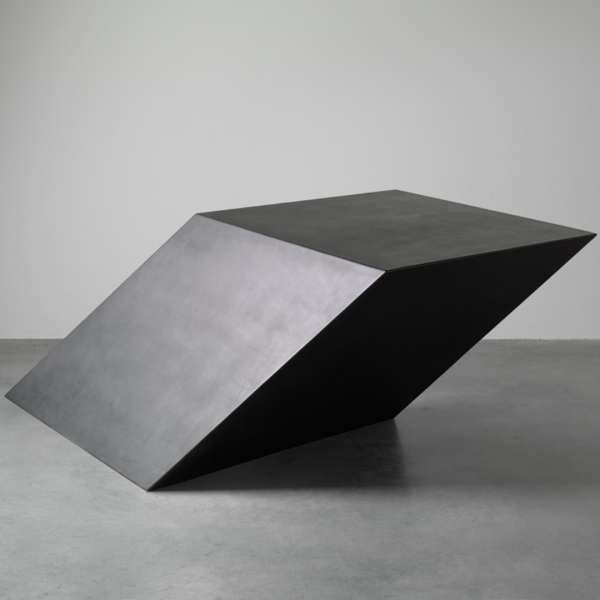SMITH, Tony
(South Orange, New Jersey, United States, 1912–New York, 1980)
The sculptor, architect, painter and theorist Tony Smith (South Orange, New Jersey, United States, 1912–New York, 1980) was a leading figure in the sculpture of the second half of the twentieth century. He studied at the Arts Student League in New York (1934–36) and the New Bauhaus School in Chicago (1937–38), beginning his career in architecture as an apprentice at the studio of Frank Lloyd Wright. From the late 1930s he combined this activity with painting, and in the 1940s he started working as a teacher, imparting classes at New York University, Cooper Union and Pratt Institute. A friend and theorist of the New York School artists (Rothko, Pollock, Still and Newman), he shared their pursuit of the sublime in art, beyond direct references to reality. In terms of sculpture, after an initial period of testing his hand and experimenting with the medium in the 1940s, from the 1960s he devoted himself entirely to this art form and started presenting work at group exhibitions. The pieces he developed were modular, based on irregular polyhedrons, octahedrons and tetrahedrons, with a complex definition and powerful intellectual charge. Some of his first sculptures were shown at Black, White and Grey (Wadsworth Atheneum Museum of Art, Hartford, Connecticut, 1964) and Primary Structures (Jewish Museum, New York, 1966), both programmatic exhibitions of minimalism. Although his preference for geometry and his constructional ideas aligned him with minimalism, and indeed he inspired many minimalist artists, the experience of the viewer as the premise for understanding the artistic phenomenon and his opposition to aesthetic conventions is nevertheless an essential aspect of his work. Smith received numerous commissions for public spaces, including several which, due to their site-specific quality and level of intervention in space and nature, set the scene, in a way, for the land art proposals that followed.

